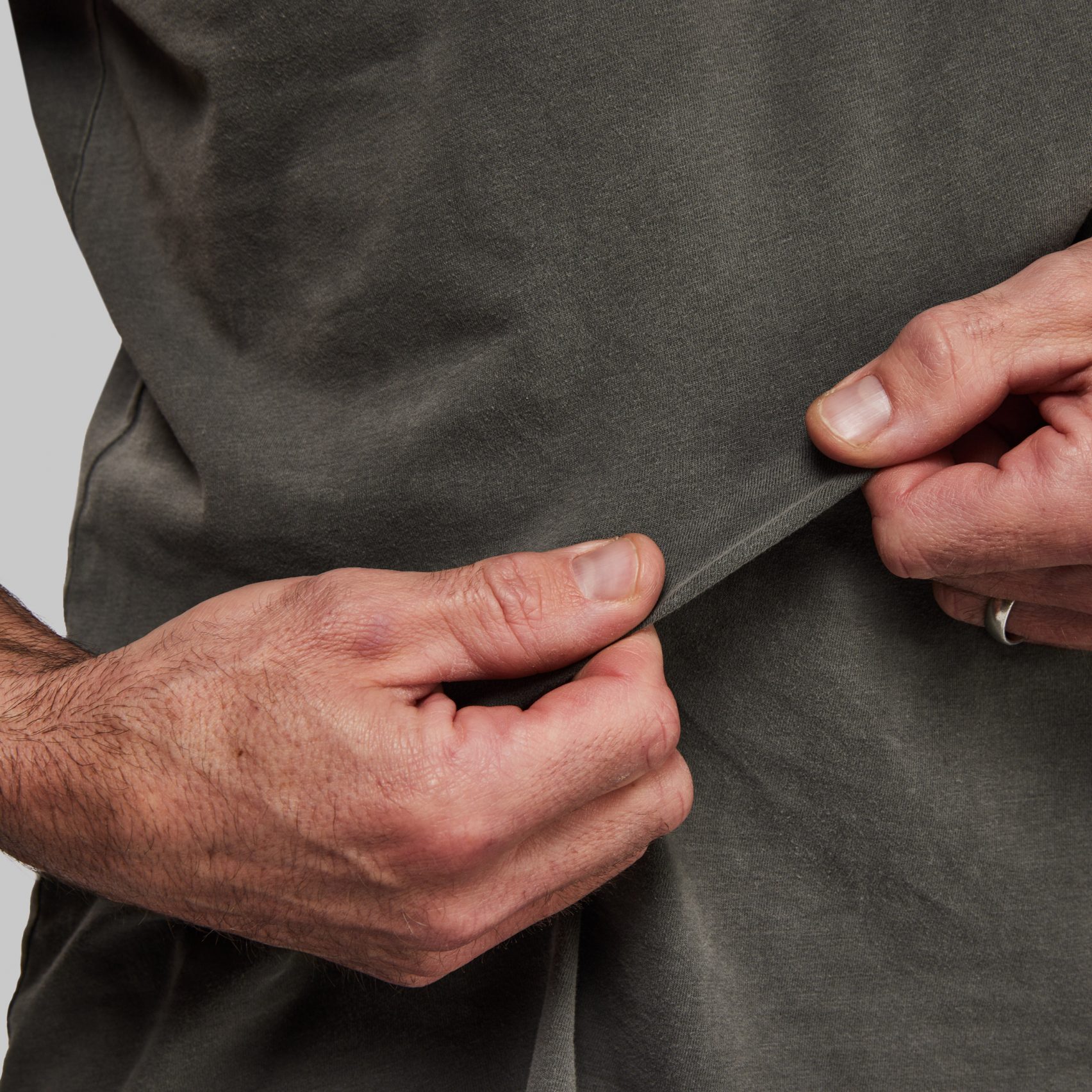
Experimental clothing brand Vollebak and biomaterials company Living Ink have teamed up to create a T-shirt using black dye made from algae instead of petroleum, in what they say marks a major breakthrough for sustainable fashion.
The dye, developed over five years of research and development, is made by taking waste spirulina algae from the natural food colouring industry and heat treating it to create a blackened char.
This process helps to lock away the carbon that was absorbed by the algae over the course of its life, making the resulting dye carbon negative according to Living Ink.
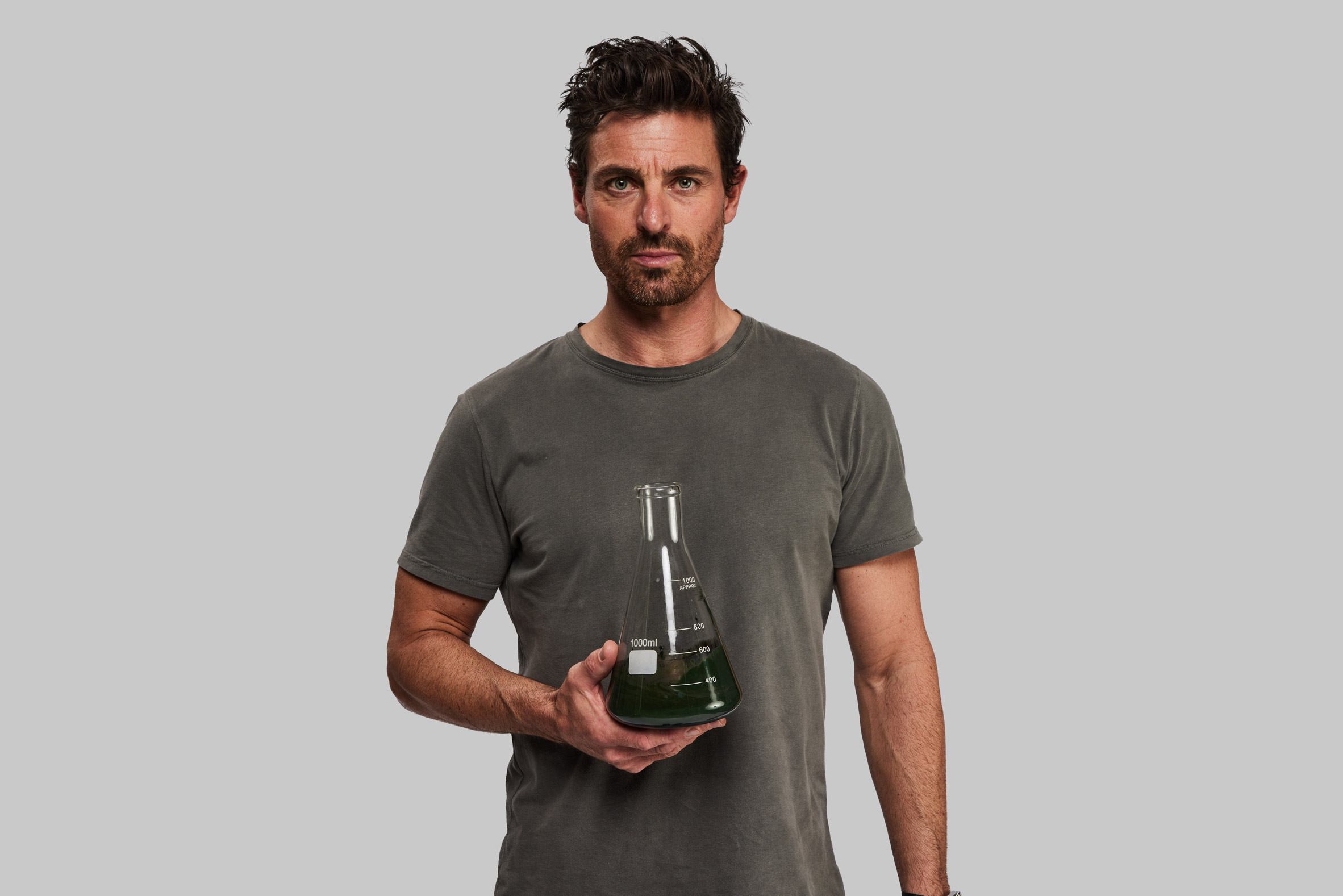
That means it could offer a more sustainable alternative to traditional black dye made from carbon black – a pigment derived from non-renewable fossil fuels that generates emissions through its extraction and refinement.
"I think it's a huge breakthrough for the fashion industry," Vollebak co-founder Steve Tidball told Dezeen. "We've now got a sustainable alternative to dyeing clothing using traditional carbon black-based dyes."
"Every black thing we own is likely to contain carbon black, from our phones to our cars to the ink in our pens," he added. "Vast tracts of lands called tar sands are stripped of all life and vegetation to extract the heavy petroleum, while the production process creates significant greenhouse gas emissions."
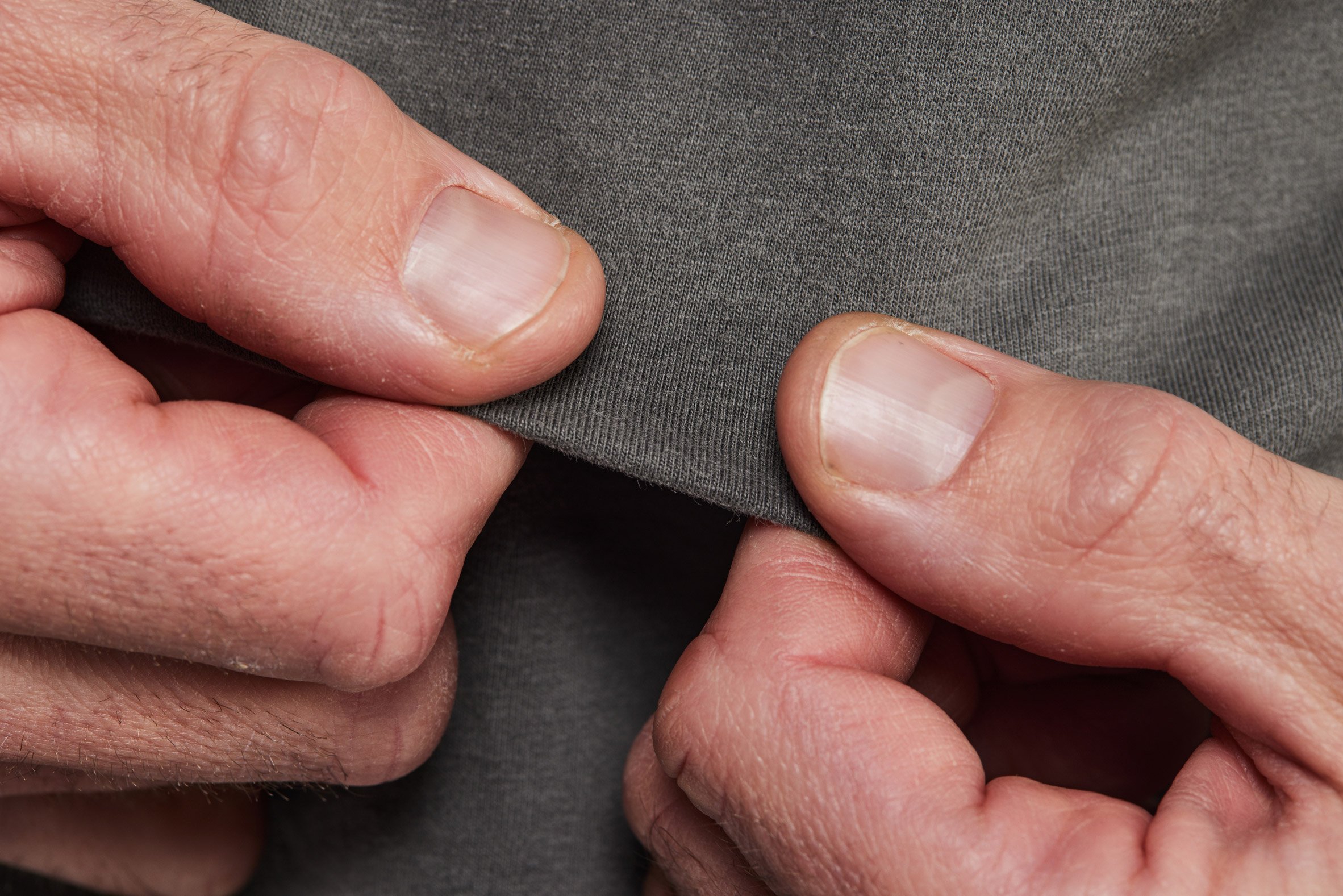
Earlier experiments in replacing carbon black saw Vollebak and Living Ink collaborate to screen-print a T-shirts using ink made from the same spirulina algae.
This proved easier than creating a dye, as the pigment particles in dye need to be microscopically small so that they can be absorbed by the fibres rather than just resting on top like an ink.
To create the dye, Living Ink had to develop a proprietary technology that is capable of grinding the resulting pigments down to a size of just one micron. The average human hair, for comparison, has a diameter of around 70 microns.
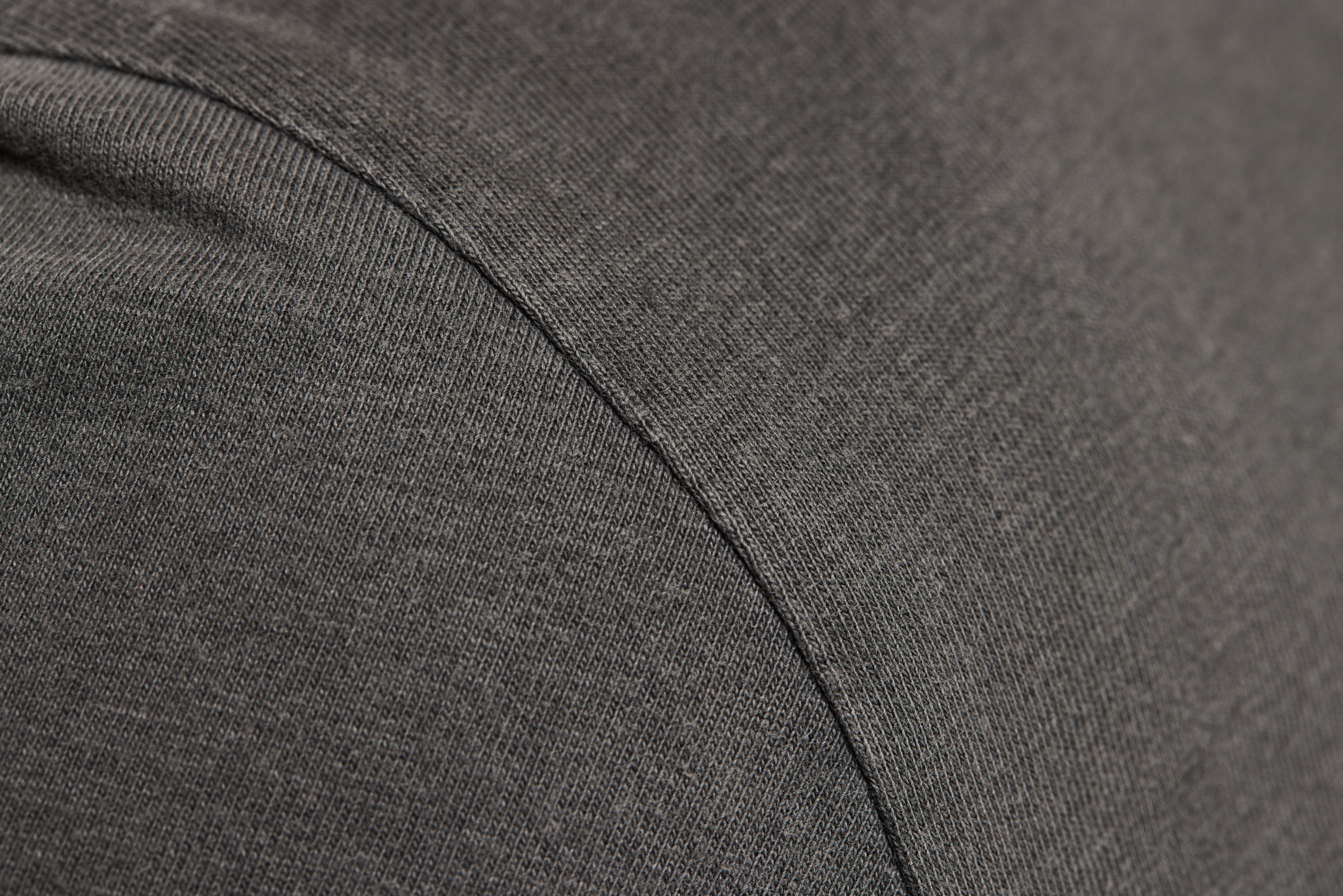
These pigments were then mixed with a water-based binder, added to industrial dyeing vats and used to create what the company says is "the first piece of clothing ever to be coloured using dye made from black algae".
For this fashion industry first, Vollebak used a T-shirt made from 80 per cent cotton and 20 per cent SeaCell – a blend of pulped eucalyptus and seaweed.
Although cotton is a lot more water-intensive than some of Vollebak's other materials such as linen or lyocell, the company says this trade-off was necessary to ensure the colour saturation of the T-shirt.
"Black algae dye doesn't behave like traditional chemical dyes, so we spent around six months testing different combinations of materials to find the optimum mix for this product," Steve Tidball said.
"Our lab tests showed that this specific combination of cotton, eucalyptus and seaweed absorbed the black algae dye best out of all the materials we trialled."
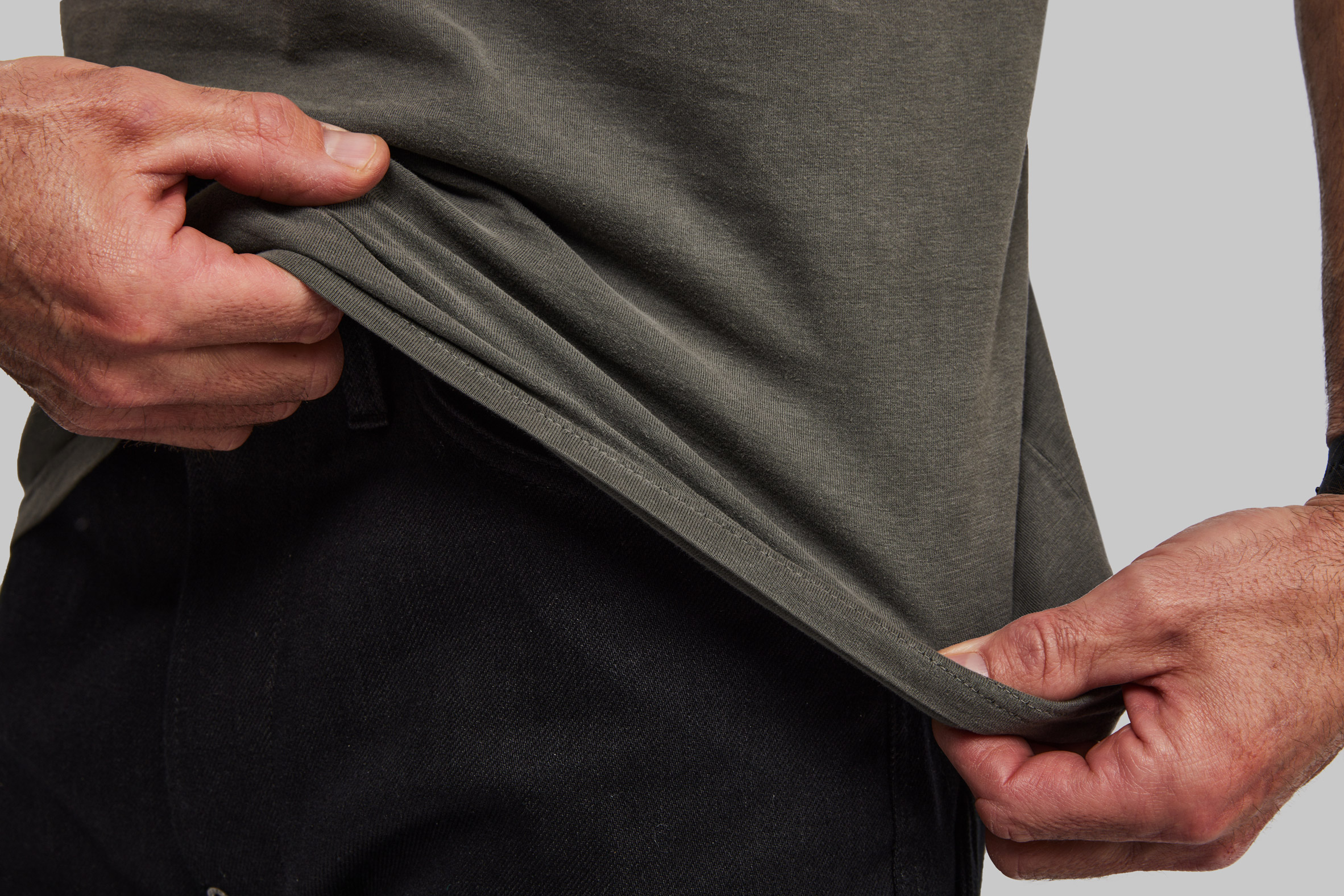
The colour of the final T-shirt still resembles more of a faded black or slate grey. But the two companies are currently working on reducing the since of the particles even further to create a more intense black.
"Ultimately it should be possible to match the colour that carbon black can produce," explained Vollebak's other co-founder Nick Tidball.
"There's a clear pathway for upscaling, too," Steve Tidball added. "It's about integrating more tech into existing systems for producing algae for food use, rather than building completely new systems from scratch."
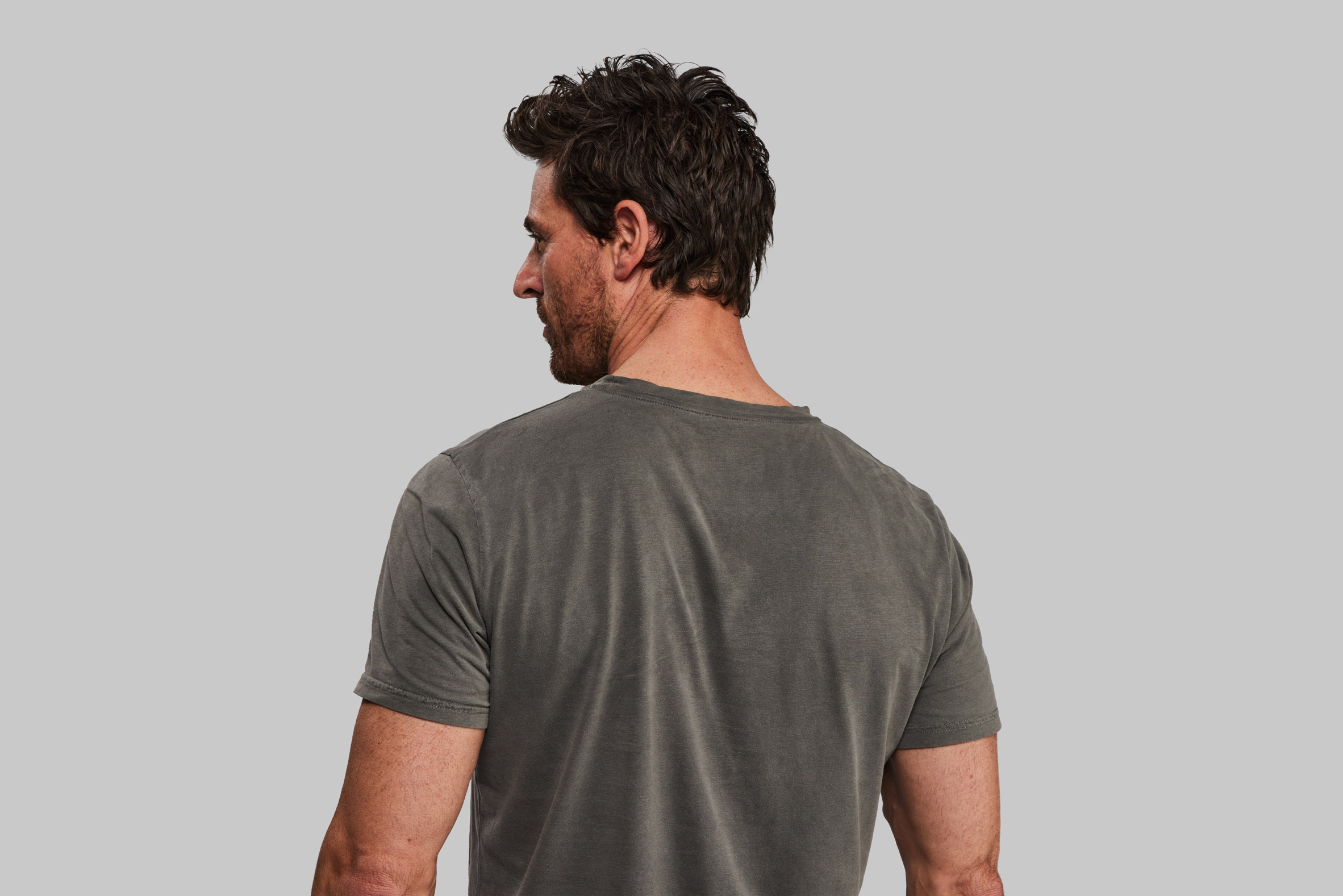
But Living Ink says the industry where black algae pigments will ultimately have the most impact is in tyre and rubber manufacturing, which account for 90 per cent of all carbon black production.
"Clothing is a great place to start but larger volume is in the more industrial sectors," founder Scott Fulbright explained.
As the fashion industry tries to move away from petroleum-based synthetic dyes, designers and material researchers are increasingly looking to harness the colours produced by living organisms.
Dutch brand Zeefier recently launched to provide seaweed dyes for the fashion industry while biofabrication designer Natsai Audrey Chieza uses bacteria to colour fabrics in a process that uses up to 500 times less water.
The post Vollebak releases "first piece of clothing ever" coloured with black algae dye appeared first on Dezeen.
